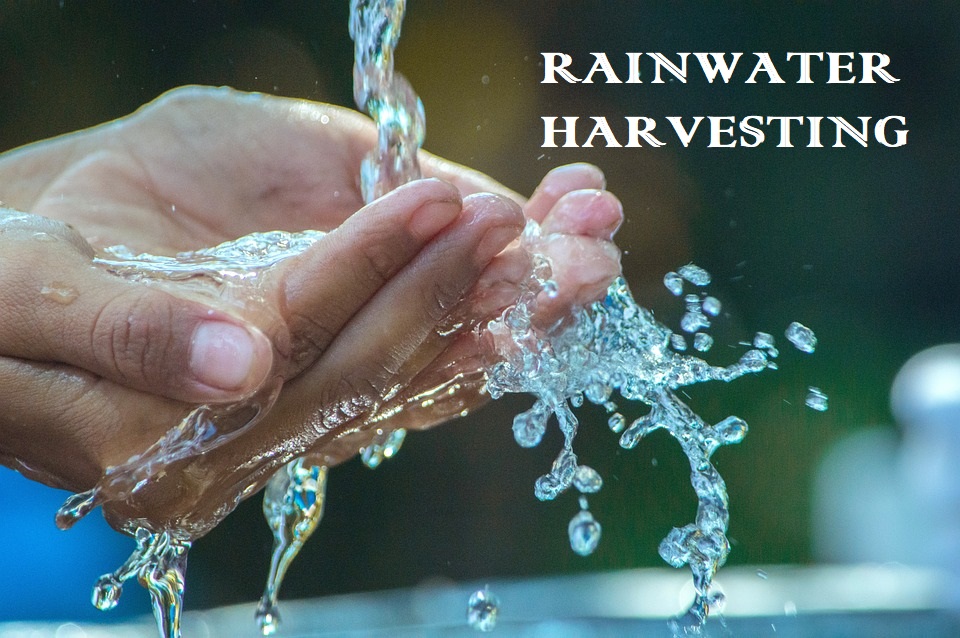Traditional Techniques Of Rainwater Harvesting In India
Traditional techniques of Rainwater Harvesting in India. Rainwater harvesting in India is a technique used to collect and store rainwater for various purposes. It involves the capture and channeling of rainwater from rooftops, land surfaces, or other catchment areas, directing it to storage tanks, reservoirs, or underground structures. The collected rainwater can then be utilized for domestic, agricultural, or industrial needs, as well as groundwater recharge and ecosystem restoration.
In a country characterized by a diverse climate and ever-increasing water scarcity challenges, rainwater harvesting has emerged as a crucial and time-tested solution for India. With its ancient roots dating back to traditional practices, the modern adoption of rainwater harvesting has gained momentum due to its sustainable and eco-friendly nature.
This innovative approach involves the collection and storage of rainwater to recharge groundwater reserves and supplement conventional water sources. As India faces the dual pressures of rapid urbanization and climate change, rainwater harvesting presents a viable means to mitigate water shortages and improve water quality. Moreover, it empowers communities to become self-reliant in water management and fosters a sense of environmental responsibility.
This introductory overview delves into the significance, techniques, benefits, and challenges of rainwater harvesting in India, highlighting its potential as a transformative solution to secure the nation’s water future.
Introduction:
India, with its diverse climatic conditions and the looming threat of water scarcity, has long recognized the importance of rainwater harvesting as a sustainable and eco-friendly solution. This time-tested practice has been revived and adapted to modern needs, aiding in the conservation of water resources and mitigating the impact of water crises.
This article explores various rainwater harvesting techniques prevalent in India, from traditional methods to innovative systems, all contributing to water security and environmental sustainability.
14 Traditional Ways Of Rainwater Harvesting In India
In India, traditional rainwater harvesting techniques are very old. They not only address water scarcity but also promote sustainable water management. This further help communities become more resilient to climatic variations. Many of these methods are still in use today, alongside modern rainwater harvesting systems, as they offer effective, low-cost solutions for water conservation and storage.
India has a rich history of traditional rainwater harvesting methods that have been practiced for centuries to harness the monsoon rains and manage water resources. Some of these traditional methods include:
Tanka:
Commonly used in Rajasthan, a Tanka is an underground storage structure that collects and stores rainwater from rooftops or catchment areas.
These cylindrical or rectangular tanks are often made of stone, brick, or concrete and help conserve water for domestic purposes.
Bawari:
Also prevalent in Rajasthan.
A Bawari is a stepped well that collects rainwater and allows it to percolate into the ground, recharging the underlying aquifers.
These structures are essential for providing water to communities and sustaining agriculture.
Rooftop Rainwater Harvesting
It is one of the simplest and most widely adopted techniques.
Rooftop rainwater harvesting involves collecting rainwater from rooftops of buildings and directing it through gutters and pipes to storage tanks or
underground reservoirs.
In urban areas, this method helps recharge groundwater and provides an additional source of water for non-potable uses,
thereby reducing the burden on municipal water supply.
Kund or Pushkarni:
Found in various parts of India.
A Kund or Pushkarni is a traditional rainwater reservoir, often built near temples.
It collects rainwater and is used for religious ceremonies and other community needs.
Khatri:
This rainwater harvesting method is used in hilly regions, where slopes are modified to divert rainwater into small, dug-out ponds.
Khatri helps prevent soil erosion and improves groundwater recharge.
Surface Water Harvesting
Regions with ample open spaces, surface water harvesting captures rainwater from natural catchment areas like parks, playgrounds, and open grounds.
The collected water is directed to ponds, tanks, or recharge pits.
where it can percolate into the ground, replenishing aquifers and sustaining local water bodies.
Eri:
Common in Tamil Nadu.
Eri is a traditional water storage tank used for rainwater harvesting and irrigation.
These large, artificial lakes are crucial for supporting agriculture during dry seasons.
Check Dams and Percolation Ponds
These check dams are small barriers constructed across water channels to impede the flow of rainwater, creating temporary storage reservoirs.
Such dams are particularly effective in hilly regions, preventing soil erosion and enabling groundwater recharge.
Therefore, percolation ponds, on the other hand, are excavated depressions that allow rainwater to seep into the ground, refilling depleted aquifers.
Zing:
Zing is a traditional method from Meghalaya.
Here bamboo pipes are used to collect rainwater and direct it to storage containers or community reservoirs.
Infiltration Trenches
Infiltration trenches are long, narrow pits dug along contours to capture and store rainwater.
Moreover, these trenches help increase soil moisture and promote plant growth while replenishing groundwater sources.
Gully Plugging:
It is widely Widely practiced in many regions of India.
Gully plugging involves constructing small check dams or earthen embankments across natural water channels.
These structures slow down the flow of rainwater, allowing it to percolate and recharge groundwater.
Recharge Wells
Recharge wells, also known as borewell recharge.
It involves diverting rainwater from rooftops or surface areas directly into existing borewells.
Therefore, the collected water recharges the aquifers, making it an efficient method to enhance groundwater levels.
Community Tanks and Ponds
Community tanks and ponds are commonly found in rural areas.
Moreover, these tanks and ponds serve as communal rainwater harvesting structures.
Rainwater from surrounding catchment areas is channeled to these tanks.
Thus, providing water for irrigation, livestock, and domestic use during dry spells.
Subsurface Dams
Lastly, subsurface dams are barriers constructed below the ground to impede the flow of rainwater and create reservoirs.
Thereby, these structures effectively store water underground, minimizing evaporation losses and recharging aquifers.
Such techniques are mainly used by the tribal in India.
Why is Rainwater Harvesting Important In India?
Rainwater harvesting is important in India due to several compelling reasons:
Due to Water Scarcity:
India faces increasing water scarcity issues.
Especially in regions with irregular rainfall and overexploited groundwater.
Therefore, Rainwater harvesting provides an additional and sustainable source of water to combat this scarcity.
Dependency On Monsoon:
India’s water availability is highly dependent on the monsoon.
On the other hand, Monsoon is often erratic and unpredictable.
Therefore, Rainwater harvesting helps capture and store rainwater during the monsoon for use during drier periods.
Recharging Groundwater:
From centuries, India heavily relies on groundwater for irrigation and domestic water supply.
Rainwater harvesting techniques such as recharge wells, infiltration trenches, and percolation ponds help replenish groundwater levels and sustain wells.
For Sustainable Water Management:
Rainwater harvesting promotes responsible water management.
It further, reduces the burden on traditional water sources like rivers, lakes, and reservoirs, allowing them to regenerate naturally.
Mitigating Floods and Soil Erosion:
Rainwater is collected and directed to storage structures.
This further, helps in preventing floods and minimizes soil erosion, especially in hilly regions.
Buffer against droughts:
Rainwater harvesting provides communities with a buffer against droughts.
Ensuring access to water for essential needs even during prolonged dry spells.
Helps in Drought Resilience.
Cost-Effectiveness:
Rainwater harvesting can be a cost-effective solution for water supply.
For country like India, in rural areas, it requires relatively simple and low-cost infrastructure.
Environment Friendly:
Rainwater harvesting is an eco-friendly practice.
It minimizes the need for energy-intensive water pumping and treatment, reducing carbon footprints.
Improves Water Quality:
Harvested rainwater is typically free from pollutants.
With proper filtration, it can serve as a clean and safe source of water for various purposes.
Empowering Community:
Rainwater harvesting fosters community involvement and ownership in water management.
It empower individuals to take charge of their water needs and improve local water security.
The above mentioned reasons are enough to understand the importance of rainwater harvesting in India. It plays a vital role in India’s water management strategy, ensuring water availability, sustainability, and resilience in the face of climate variability and growing water demands. Its adoption is crucial for conserving water resources and supporting the well-being of both rural and urban populations across the country.
Role of state government in rainwater harvesting in India
State governments in India play a crucial role in promoting and implementing rainwater harvesting. The government takes initiatives to address water scarcity, enhance water security, and promote sustainable water management. Their role encompasses various aspects, including policy formulation, financial support, awareness campaigns, and regulatory measures.
Following are some key roles and responsibilities of state governments in rainwater harvesting:
Making Policies:
The State governments are responsible for formulating policies.
They also make guidelines related to rainwater harvesting.
This includes outlining the objectives, targets, and strategies for its implementation.
Moreover, they create a supportive legal framework to encourage rainwater harvesting adoption across different sectors.
Providing Financial Support:
The State governments allocate funds for harvesting the rainwater.
They also provide financial incentives, subsidies, or grants to individuals, communities, and institutions for installing rainwater harvesting systems.
These financial incentives help reduce the initial investment burden.
Creating Awareness and Capacity Building:
State governments conduct awareness campaigns.
They also organize educational programs to inform the public, farmers, and local communities about the benefits of rainwater harvesting.
Moreover, they also offer training and capacity-building programs to ensure effective implementation and maintenance of the systems.
Mandatory Rainwater Harvesting:
In India, some states have made rainwater harvesting mandatory for certain types of buildings, including commercial and residential properties.
State governments enforce these regulations to ensure a higher level of compliance and enhance water conservation efforts.
Tamil Nadu is the first of its kind to make the rainwater harvesting compulsory.
Initiatives Related to Research and Development:
Some of the State governments support research and development initiatives related to rainwater harvesting techniques and technologies.
They collaborate with research institutions and organizations to identify innovative approaches and adapt them to local conditions.
Implementing in Government Buildings:
Many state governments lead by example by implementing rainwater harvesting systems in government buildings and public infrastructure.
Thereby showcasing the benefits of rainwater harvesting and encouraging its adoption in the private sector as well.
Managing Water Resource:
Rainwater harvesting is often integrated into the state’s overall water resource management plan.
State governments develop strategies to utilize rainwater.
This includes recharging groundwater, reducing runoff, and supplementing water supply for agriculture and domestic use.
Monitoring Rainwater Harvesting Projects:
State governments monitor the progress and effectiveness of rainwater harvesting projects.
This is done to assess their impact on water availability and quality.
Moreover, they also conduct periodic evaluations and make necessary adjustments to improve the efficiency of the systems.
Collaborations and Partnerships:
The state governments also do partnerships and collaborate with NGOs.
They also collaborate with community-based organizations, and other stakeholders.
The purpose is to implement rainwater harvesting projects effectively.
Further, they forge partnerships with private companies and philanthropic organizations to mobilize additional resources.
Managing Drought:
During drought like situations, state governments promote rainwater harvesting.
This is mainly done as a critical measure to alleviate the impact of water shortages.
That is why they encourage communities to conserve rainwater for essential needs during such challenging times.
Conclusion:
Rainwater harvesting is an environmentally friendly and sustainable practice that can help alleviate water scarcity, reduce dependence on conventional water sources, and promote water conservation and management. It has been employed for centuries in various cultures worldwide and continues to be an essential strategy, particularly in regions facing water stress or with limited access to freshwater resources.
Rainwater harvesting techniques in India exemplify the nation’s endeavor to address water scarcity sustainably. The integration of traditional wisdom with modern engineering has resulted in a diverse array of methods, each suited to the specific needs of different regions. Embracing rainwater harvesting not only ensures water security but also fosters resilience against climate change and promotes responsible water usage. As India continues to face water challenges, the widespread adoption of these techniques offers a promising path towards a water-secure future. Government support, community participation, and awareness campaigns are vital to maximizing the potential of rainwater harvesting and safeguarding India’s precious water resources for generations to come.





0 Comments